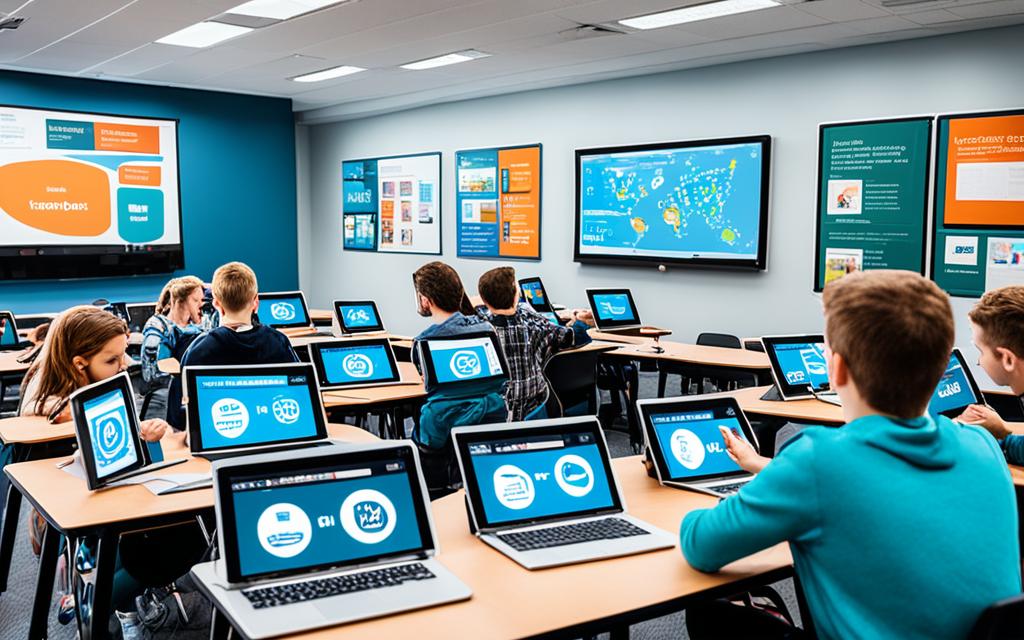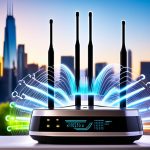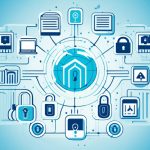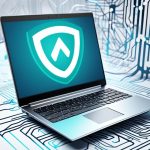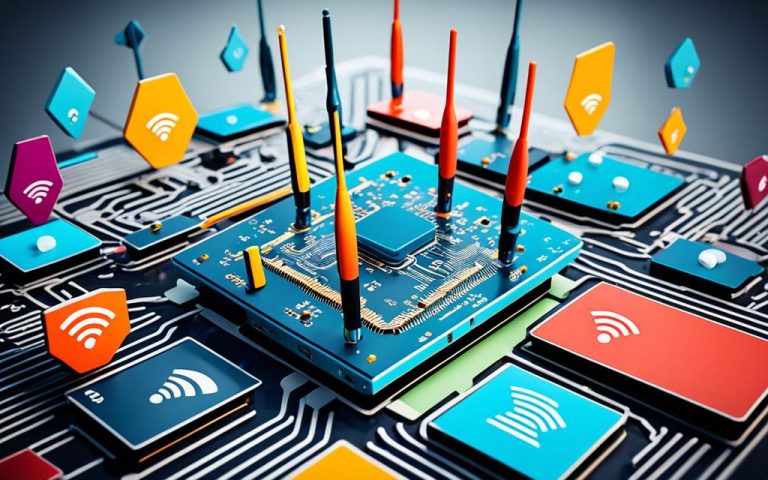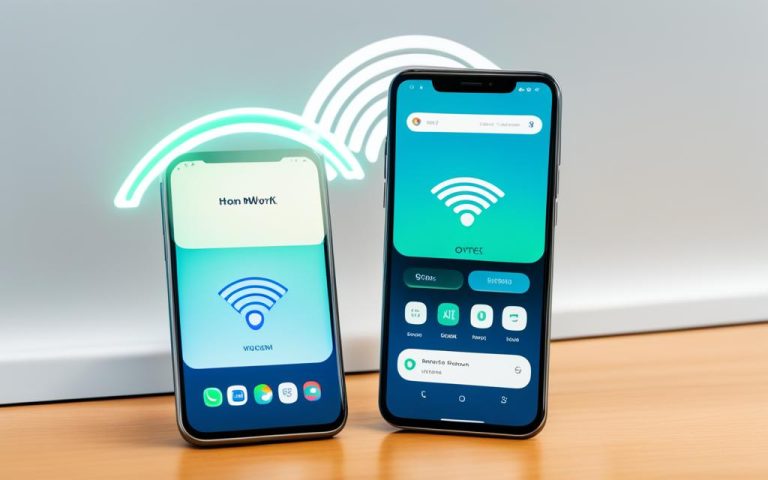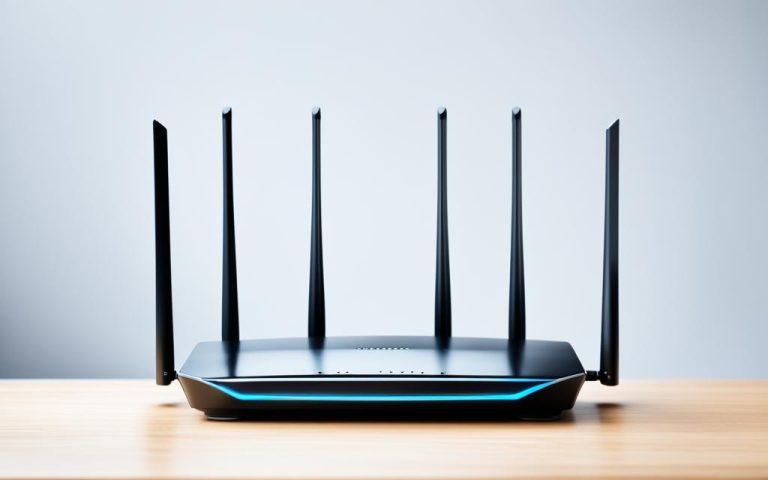In an era where technology is an integral part of education, reliable Wi-Fi infrastructure plays a vital role in enabling enhanced learning experiences. Educational institutions are increasingly adopting digital tools and platforms to support their curriculum, and seamless connectivity is essential for students and teachers alike.
A robust Wi-Fi network ensures uninterrupted access to online resources, virtual classrooms, and interactive learning tools, bridging the connectivity gap that exists both on-campus and off-campus. It allows students to fully engage with multimedia-rich content and participate in video conferencing, enabling real-time collaboration and discussions.
Investing in a reliable Wi-Fi infrastructure is not just a technological necessity but a strategic imperative for empowering the next generation of learners and fostering their educational success.
Bridging the Connectivity Gap in Education
A primary benefit of a reliable Wi-Fi network in educational campuses is its ability to bridge the connectivity gap. With the majority of educational resources now accessible online, a robust Wi-Fi network ensures that students and educators can seamlessly connect to the internet, access educational materials, and engage in virtual classrooms.
This inclusivity is particularly vital in situations where remote learning or hybrid models are prevalent. Students and teachers can overcome geographical barriers and have equal access to educational resources and opportunities. High-speed and dependable Wi-Fi connections enable uninterrupted online learning experiences, allowing students to fully immerse themselves in dynamic and engaging materials.
Enhancing Learning Experiences with Robust Wi-Fi
Reliable Wi-Fi infrastructure goes beyond providing internet access; it significantly enhances the overall learning experiences for students. Interactive and collaborative learning tools, video conferencing, and multimedia-rich educational content rely heavily on high-speed and dependable Wi-Fi connections. Without interruptions or connectivity issues, students can fully immerse themselves in dynamic and engaging learning materials. Interactive lessons, virtual discussions, and group projects become seamless, fostering a more interactive and dynamic educational environment. The integration of reliable Wi-Fi enables students to access and utilize diverse digital resources, engage in real-time collaboration, and benefit from multimedia-rich content that enhances their engagement and understanding.
Interactive Learning Tools
The availability of robust Wi-Fi networks empowers students to engage with interactive learning tools. These tools enable students to actively participate in their learning journey, stimulating creativity, critical thinking, and problem-solving skills. Whether it’s educational apps, online simulations, or virtual laboratories, interactive learning tools bring the classroom to life, offering hands-on experiences that enhance comprehension and retention of knowledge.
Video Conferencing
With reliable Wi-Fi infrastructure, video conferencing becomes a reality in education. Students can connect with their peers and educators from remote locations, facilitating virtual lectures, group discussions, and project collaborations. Video conferencing offers a platform for real-time interactions, creating an inclusive and interactive learning environment. It enables students to engage in meaningful discussions, seek clarifications, and receive personalized guidance, regardless of their physical location.
Multimedia-Rich Content
Wi-Fi technologies play a crucial role in delivering multimedia-rich educational content to students. From interactive videos and virtual reality experiences to multimedia presentations and e-books, reliable Wi-Fi connectivity ensures a seamless delivery of diverse multimedia formats. The integration of multimedia-rich content enhances student engagement, making complex concepts more accessible and stimulating the development of visual and auditory learners. Through interactive multimedia, students can explore topics from different perspectives, deepening their understanding and fostering a holistic learning experience.
| Enhancements | Benefits |
|---|---|
| Access to interactive learning tools | Stimulates creativity, critical thinking, and problem-solving skills |
| Video conferencing capabilities | Enables real-time interactions and collaborative learning |
| Delivery of multimedia-rich content | Enhances student engagement and understanding |
Reliable Wi-Fi infrastructure empowers students with interactive learning tools, enables real-time collaboration through video conferencing, and delivers multimedia-rich content that enhances engagement and understanding. By investing in robust Wi-Fi networks, educational institutions create an environment where students can thrive, explore, and unlock their full potential.
Supporting Educators and Enriching Teaching Methods
Reliable Wi-Fi infrastructure plays a crucial role in supporting educators and enriching teaching methods in educational institutions. With access to high-speed and dependable Wi-Fi networks, teachers can utilize a wide range of online professional development opportunities to stay updated with the latest pedagogical approaches, educational trends, and teaching methodologies. These online courses and resources empower educators to enhance their teaching skills and deliver effective instruction to their students.
Moreover, wireless technology enables personalized learning experiences through adaptive learning platforms and educational apps tailored to individual student needs. By leveraging the power of Wi-Fi, teachers can create a more engaging and effective learning environment that caters to diverse learning styles and abilities. Whether it’s through interactive learning tools, multimedia-rich content, or collaborative virtual classrooms, reliable Wi-Fi infrastructure enables teachers to provide tailored instruction and support to each student.
Furthermore, access to teaching tools and resources is greatly enhanced with the availability of robust Wi-Fi networks. Teachers can leverage a wide range of digital resources, such as educational websites, e-books, interactive simulations, and online libraries, to supplement their lessons and engage students in a more interactive and dynamic manner. By tapping into the power of technology, teachers can bring real-world examples, interactive quizzes, and virtual field trips into their classrooms, enhancing student understanding and fostering a deeper level of engagement.
“Wi-Fi has transformed the way I teach, enabling me to provide personalized learning experiences and engage my students in innovative ways. With reliable connectivity, I can explore a wealth of online resources, connect with other educators worldwide, and continuously enhance my teaching methods.” – Sarah Thompson, High School Teacher
In addition, reliable Wi-Fi infrastructure also enables teachers to seamlessly collaborate with their peers and share best practices. Through online platforms and virtual conference tools, educators can connect with teachers from around the world, exchange ideas, and gain insights into effective teaching strategies. This collaboration fosters a vibrant community of educators focused on professional growth and improving educational outcomes.
Overall, investing in reliable Wi-Fi infrastructure is essential for supporting educators and enhancing teaching methods. From online professional development to personalized learning experiences and access to teaching tools and resources, reliable Wi-Fi networks empower educators to deliver high-quality instruction and meet the diverse needs of their students.
The Benefits of Reliable Wi-Fi for Educators:
| Benefits | Description |
|---|---|
| 1. Access to Online Professional Development | Stay updated with the latest pedagogical approaches, educational trends, and teaching methodologies through online courses and resources. |
| 2. Personalized Learning Experiences | Create a more engaging and effective learning environment by utilizing adaptive learning platforms and educational apps tailored to individual student needs. |
| 3. Enhanced Teaching Tools and Resources | Utilize a wide range of digital resources, such as educational websites, e-books, interactive simulations, and online libraries, to supplement lessons and engage students. |
| 4. Collaboration and Professional Networking | Connect with other educators worldwide, collaborate on innovative teaching strategies, and share best practices through online platforms and virtual conferences. |
Conclusion
The reliability of Wi-Fi infrastructure in educational campuses is of paramount importance. It serves as the backbone for the digital transformation of education, providing seamless connectivity to bridge the connectivity gaps and enhance learning experiences. With robust Wi-Fi networks, students and educators can access online resources, participate in virtual classrooms, and utilize interactive learning tools effectively.
Investing in reliable Wi-Fi infrastructure is not only crucial for technological advancement but also for promoting digital equity. It ensures that every student, regardless of their location or background, has equal access to educational opportunities and resources. By eliminating barriers to online accessibility, educational institutions can empower learners and foster their educational success.
In the digital age, reliable Wi-Fi networks are not merely a luxury but a strategic imperative for educational institutions. They enable collaboration, facilitate personalized learning experiences, and empower educators to enhance their teaching methods. Robust Wi-Fi infrastructure plays a vital role in creating an inclusive educational environment that enables students to thrive, regardless of their circumstances.
To truly unlock the potential of students and educators, educational institutions must prioritize and invest in reliable Wi-Fi infrastructure. By doing so, they can pave the way for a future where digital equity is the norm, and educational success is within reach for all.
FAQ
How does reliable Wi-Fi infrastructure benefit educational campuses?
Reliable Wi-Fi infrastructure benefits educational campuses by bridging the connectivity gap and providing uninterrupted access to online resources, virtual classrooms, and collaborative tools. It enhances learning experiences by facilitating interactive and multimedia-rich content, video conferencing, and real-time collaboration among students.
Why is a robust Wi-Fi network important in education?
A robust Wi-Fi network is important in education because it enables seamless connectivity and enhances learning experiences. It allows students and educators to access educational materials, engage in virtual classrooms, utilize interactive learning tools, and participate in collaborative activities without interruptions or connectivity issues.
How does reliable Wi-Fi infrastructure support educators?
Reliable Wi-Fi infrastructure supports educators by offering access to online professional development opportunities, personalized learning experiences, and a wide range of teaching tools and resources. It enables teachers to stay updated with the latest educational trends and teaching methodologies, cater to diverse learning needs effectively, and enhance their teaching methods.
What is the role of reliable Wi-Fi infrastructure in the digital transformation of education?
The role of reliable Wi-Fi infrastructure in the digital transformation of education is crucial. It serves as the backbone for the integration of technology in education, promoting digital equity, ensuring equal access to educational opportunities and resources, and empowering the next generation of learners to succeed.
How does reliable Wi-Fi infrastructure enhance learning experiences?
Reliable Wi-Fi infrastructure enhances learning experiences by facilitating access to interactive learning tools, video conferencing, and multimedia-rich content. It enables students to fully immerse themselves in dynamic and engaging materials, participate in real-time collaboration with peers, and access diverse digital resources that promote engagement and understanding.

